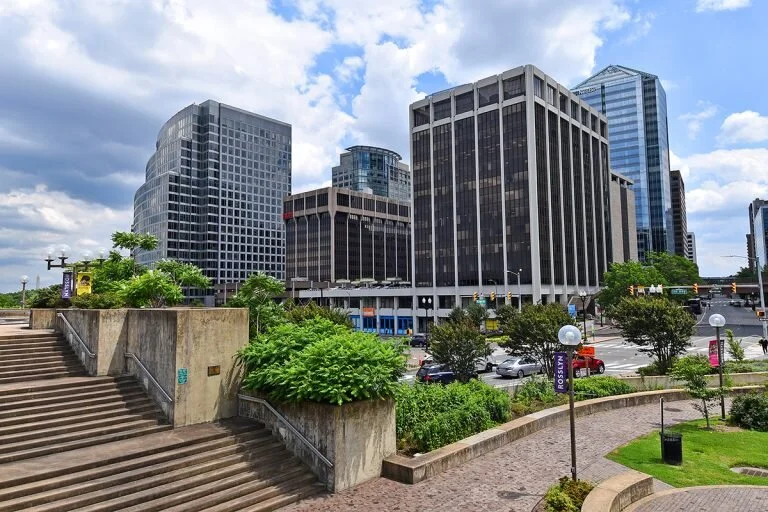The Rosslyn-Ballston corridor illustrates smart growth planning and the type of transit-oriented development that concentrates high-density, mixed-use development along a major transit corridor, while preserving and enhancing existing residential neighborhoods.
Planning for the Rosslyn-Ballston Corridor involved a 12-year intensive effort by citizens, staff and County officials. It was the first of several key planning efforts that had a significant impact on shaping Arlington as it is today. Arlington and the entire Washington, D.C., area experienced considerable growth during the 1960s as demand for office space soared and new residents flocked here for jobs. County planners and officials saw an opportunity to manage this growth in a way that would reimagine our communities, reduce our dependence on cars and revitalize struggling retail and business areas. Ultimately, it connected already-thriving residential neighborhoods to public transportation, jobs, schools, parks, shops and services.
When a new regional rail system was being planned during the 1960s, County officials and planners envisioned concentrating high-density development along the path of the new rail system. However, designs for the new rail system outlined a course running parallel to Interstate 66, which would bypass established commercial areas like Ballston. County officials successfully lobbied for an underground line with stations in Rosslyn, Clarendon, Courthouse, Virginia Square and Ballston. Following extensive study and community input, County officials decided on a plan that concentrates the highest density uses within walking distance of Metro stations, tapers densities, heights and uses down to surrounding single family residential neighborhoods, and provides for a mix of office, hotel, retail and residential development. This is referred to as a “bulls-eye approach” and it targets the tallest and most dense development within one-quarter mile of each Metro station. The County’s General Land Use Plan incorporates this approach and defines the appropriate land use for each area.
The numbers attest to the success of the Rosslyn-Ballston Corridor. Between 1990 and 2000, population increased by nearly 107 percent within the quarter-mile radius of the Rosslyn-Ballston metro stations, accounting for 28 percent of the County’s overall growth. Today, the results shine in seven mixed-use, walkable and bicycle-friendly Metro transit villages. Two Metro corridors accommodate 36 million square feet of office space, 6 million square feet of retail space and over 47,000 residential units.
[Source: Arlingtonva.us]

